Lunchtime is not what it used to be. Gone are the days of the leisurely lunch, or even the standard hour come to that. Research shows that 86% of people take less than half an hour for lunch and that even the timing has become ‘elastic’, with people taking lunch anywhere between 10am and 7pm (source: Ginsters).
This could account for the fact that nearly one-third of all sandwiches and savouries are sold out of the traditional ‘lunchtime’ – before 10am and after 4pm. Another factor could be that some 23% of people don’t leave their desk for lunch, buying something on the way to work to consume in the office instead.
Now, while this is bleak news for the poor old office worker, it does present a strong business opportunity for today’s forecourt trader, who can tailor the lunchtime offering to the local demand – everything from bacon baps and pies for the builders round the corner to sandwiches and jacket potatoes for the local office workers.
HOT FOOD
Hot food is a tempting prospect to the hungry worker who has nipped out of the office in search of sustenance. Bake-offs, with their ‘buy me’ branding and tempting aromas, are a big pull at lunchtimes and bring a whole new audience to the forecourt who might otherwise shop elsewhere.
Country Choice says the key to successful bake-off in a forecourt is to focus on making things ‘easier and faster’ for the consumer. “This includes the use of self-service merchandising units which allow products to be displayed wrapped and ready to go,” explains marketing director Raj Tugnait. “This means there is no queuing and so consumers are in and out in no time. And self-service means fewer staff, a big benefit to the retailer.”
Offering the right products is key too, says Country Choice. For example, the company offers retailers 10 different types of sausage roll, so they can choose those that will sell best in their market and ensure customers don’t leave empty-handed.
“Making products easier to eat and less messy is another way for retailers to improve their offering,” says Tugnait. Indeed, this is central to the new Bake & Bite brand, with its user-friendly packaging, such as sleeves for hand-held savouries.
“Forecourt retailers should not be put off by the cost of entry in to the sector,” adds Tugnait. “Initial investment can be as little as £2,000. With margins of around 40-60%, this means readily achievable sales of £500 to £1,000 per week will see a return on the investment in as little as six months.”
Another hot food option beloved of the forecourt is the microwave. Happily, as the demand for microwaveable lunchtime options grows, so does the sophistication of the offering.
Chantal Busson, senior brand manager at Heinz Soup Cups, explains: “As meals become lighter, we have identified a need for new, high-quality convenient snacking products to increase consumer choice beyond traditional ‘grab and go’ options. This coincides with the growth of preparation options available in the workplace, which includes microwaves as well as kettles and toasters.”
Heinz says its microwaveable soup cup, with snap-on lid and insulated cup sleeve, is ideal for people picking up lunch to take back to their desk or for those who want to eat on the go.
Heinz research shows 72% of consumers who trialled soup cup ate it with a sandwich or bread, and for this reason, Heinz advises siting the soups next to the sandwich fixture or front of store.
Meanwhile, McCain Foods has a new range of microwaveable frozen products, building on its McCain Micro Toastie. The McCain Anytime range consists of two paninis, a naan and two baguettes and is being backed by a multi-million pound investment.
“With the sandwiches appealing to younger adult consumers looking for a more substantial on-the-go product, the range fits superbly with the demographics of a typical forecourt user,” says a McCain spokesperson.
Elsewhere, the Rustlers range of microwaveable products – such as all-day breakfast bap, flame grilled quarter pounder with cheese, and southern fried chicken sandwich – are established forecourt offerings, but last year, Rustlers says it increased consumer awareness by 70% through its advertising campaign. This year’s campaign, which began last month, hopes to achieve similar success.
Pot Noodle is another established lunchtime favourite, with nearly 60% of Pot Snacks being consumed at lunchtime (TNS Family Food Panel 2004). Unilever says forecourt traders can boost lunchtime sales of Pot Noodles by combining effective displays (near food-to-go or soft drinks) with good stock management (combine top sellers with limited editions). Sales can be boosted further, it says, by providing a hot water source, such as Pot Stop.“In forecourts that provide hot water, sales have been shown to increase by up to 75%”, says a Unilever spokesperson (source: Minatec 2004).
There has been some confusion over whether use of a Pot Stop makes the Pot Noodle liable for VAT. Unilever confirms that if it is heated up on the premises, then it is treated as any other hot food-to-go product and VAT applies. Retailers must judge whether consumers will be willing to pay the extra for the convenience.
Incidentally, the first Pot Noodle flavour, chicken & mushroom, is still the favourite and is the main focus of the latest advertising campaign.
CHILLED
The chiller is often the first place consumers head for at lunchtime. In fact, Ginsters’ research shows that 90% of forecourt shoppers who go to the chiller for a sandwich or savoury do so before they go elsewhere in the store, so retailers need to make sure they catch the sale. Sandwiches are key here, with the total sandwich market worth £3bn, or 1.8 billion units (TNS Sandwich Trak, 12 months to December 2004). Moreover, Sarah Perry, category manager at Ginsters, says consumers who buy a sandwich at the forecourt spend on average £5.66 per visit, so it’s important to offer a quality selection.
Today’s sandwich market is very sophisticated, with wraps, paninis, bagels and flatbreads very much in demand. In fact, chicken caesar salad wrap is now the nation’s favourite type of sandwich (HIM SNAP Nov 2004). However, the same HIM report points out that while ‘exotic fillings and breads’ are becoming more important to shoppers, 70% of sandwich fillings are the ‘old favourites’. Forecourts, then, need to offer a balance of old favourites and new hot sellers.
Fortunately, manufacturers are making it easier than ever to keep up. Sutherland Sandwiches’ range, for example, includes everything from classic twins, deep-fills and triple packs to sub rolls and wraps. (Away from the chiller, it also has a range of Hot Eat paninis and toasties for use with panini grills etc).
Another manufacturer to step up its sandwich offering is Spar. Its new own-label range launched earlier this year aims to “keep up to date with the latest consumer trends”.
Varieties include deep fills and healthy lines as well as wraps, subs and farmhouse-style sandwiches. To promote its new range Spar has a consumer competition with prizes including holidays and plasma TVs, which runs until July 8.
Retailers need to leave room in the chiller for other lunchtime options too. Having re-launched its sandwich range this year, Ginsters is rolling out new savoury products. The company says its savoury range has more than doubled in impulse sales over the past five years, from £49m to £110m.
Its latest pastry products include a new Cornish roll and a pork roaster roll, as Ginsters says the sausage roll sector is growing by 13% year on year.
Ginsters currently has its biggest ever press campaign running in partnership with Metro newspaper, aimed specifically at office workers.
For health-conscious consumers, Anthony Alan’s Foods has launched a range of Weight Watchers savoury pastries, which includes sausage roll, pork & apple roll, cheese & onion slice and chicken & stuffing slice. All are available in three pack sizes – individual, twin and multipacks.
Meanwhile, Heinz is pushing its salad shakers range in forecourts, predicting sales will shoot up in summer. Tom Cardwell, senior brand manager at Heinz, says: “Salad shakers are grabbable lunches for on-the-goers. They can be eaten straight from the shaker and come with a plastic fork. They have snap-on lids to prevent spills, they have great on-shelf standout, with fresh modern appeal, they are portable and provide a complete meal on the go in a range of great varieties.”
Heinz salad shakers flavours include tuna, chicken Caesar and chicken tikka, and Heinz pasta shakers include honey & mustard chicken, mozzarella & tomato and chicken & bacon.
Pre-packaged ‘picnic’ style offerings are all the rage at the moment and perfect for on-the-go consumers. Golden Vale, for instance, describes Brunchettas, a combination of cheese wedges, relish and crunchy breads with a plastic ‘spreader’, as a ‘grab-and-go’ meal. Varieties include ploughman’s relish (toasted multi-grain bread slices with ploughman’s pickle) and Brunchettas pineapple and chilli (cheddar cheese wedges, bruschetta slices and pineapple relish with a hint of chilli).
Similarly, Dairy Crest developed Dip & Go specifically for the convenience market. Five sticks of Cathedral City cheddar cheese are packaged together with a Branston Pickle dip, offering time-pressed consumers the reassurance of two established brands.
Pre-packaged snacks are big news in the kids market too, and Dairylea Lunchables are a key product here. Sarah Petts, channel and communications manager at Kraft Foods, says the Dairylea Lunchables brand has an 86% share of the lunch combinations market (source: ACNeilsen) and adds that they sell particularly well in forecourts as they can be easily consumed without making too much of a mess in the car.
Says Petts: “Forecourt traders should concentrate on stocking Dairylea Lunchables core range, which are Chicken Stackems and Ham Stackems, containing wafer thin meat, Dairylea slices and crackers.”
She adds: “The Dairylea range is continually supported by an extremely strong TV advertising campaign and features the black and white cartoon cow ‘Moo’.”























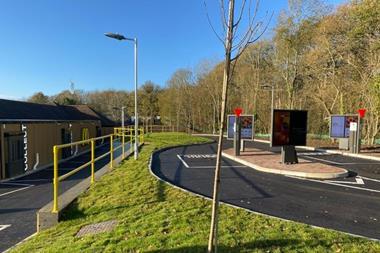

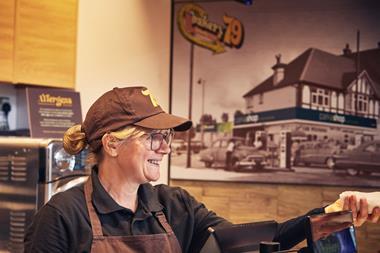
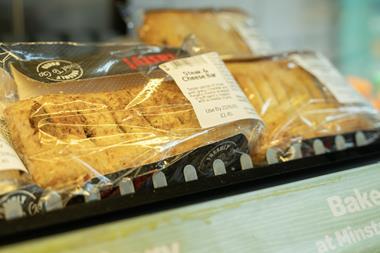

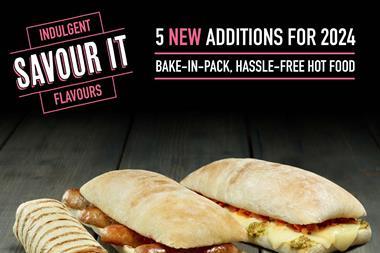
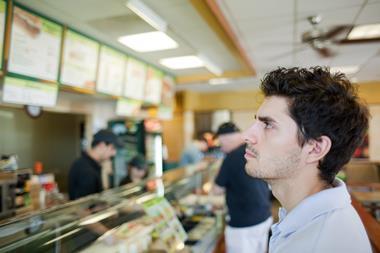
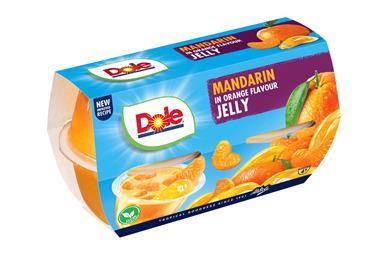


No comments yet